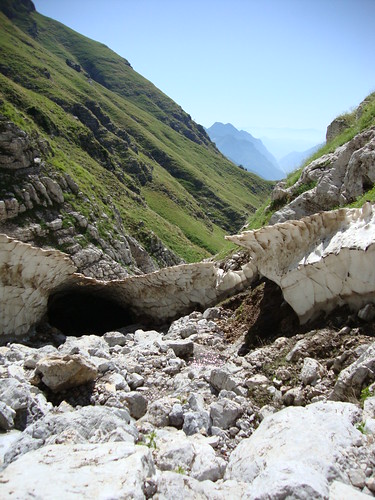The extensive oak, conifer and beech forests provide a home for the wolf, the fox, the jackal and the ferret, while the higher pine forest contains the brown bear, wolf, the pine marten, two kinds of wild cat, the lynx and the weasel . . . . Albania has no fewer than 14 species of bat, and about 350 native birds . . . . Albania is one of the richest areas for plant life in the Mediterranean. 3221 different types of plant grow in Albania . . . . there are 489 plants which are characteristic of the Balkan peninsula, about 40 of which are unique to Albania. Most of these are found in the high mountainous zones . . . .
– James Pettifer, from The Blue Guide to Albania & Kosovo (2008)
Ugh. Just another reason to really hate the Blue Guide. In fact there are NO jackals here – or ferrets, unless you’re counting martens? There are TWO kinds of martens – pine and stone – and possibly the only place in Europe where their habitats overlap? There’s only one kind of wild cat, and no weasels that I know of. And the search to find hard evidence of Balkan Lynx in the area remains one of our most exciting challenges. I’m pretty sure the plant information is low-balled too, but I have to get back to you on that. It’s also pretty smashing for butterflies (an Israeli group of experts identified over 70 species in 3 days last year) and birds (including super-rare things like the White-Backed Woodpecker).
For anyone who’s ever dreamed of being a 19th century naturalist explorer (like ME, and I’ve got the degree to prove it), Valbona Valley is heaven. To date there is no field guide, and little formal research has been done. What there is, is a uniquely pristine and complete ecosystem, accompanied by a rich fund of local lore and knowledge. Your guides will be happy to share with you their comprehensive inherited knowledge, and you might also like to be part of the burgeoning research being spearheaded by the JourneytoValbona staff. In 2009 we began collecting plant specimens to build our own herbarium, which visitors are welcome to peruse (and add to – with at least 3221 known plant species to collect, in all seasons, we welcome your help!) In 2017 we hope to begin work on a local field guide, as well as reaching out to international large-carnivore-monitoring programs – you’re welcome to come help us collect bear poo in autumn!
The Valbona Valley is dominated by Beech Forest (the Beech is called “Ah” in Albanian). A typical walk through these woods will take you through stands of virgin beech trees, gorgeous in their sinewy and speckled smooth trunks, with airy fluttering canopies which transform the light from above into a cozy mystery. For the young of heart, these trees are perfect for climbing, their branches frequently forming baskets in which the climber can curl up and even roll around in without falling out (Catherine’s proved it). The land is everywhere informed by the twin characteristics of the limestone karst geology, which breaks out in pretty outcrops of boulders, as well as encompassing frequent and irrepressible underground springs and streams. Accordingly, you are never far from the sound of burbling water (clear, cold and safe to drink!), and never far from a convenient outcrop to climb, to get a view or orient yourself, and the woods have a fairy tale quality. Hushed, airy, colorful and fragrant, the forests are pleasure to explore, neither too dense to move through, nor ever too tamed to disparage. In autumn, the knowledge that there may be wolves around (they move higher up in summer), adds a certain piquant Grimm’s something to an evening ramble.
Moving out of the forest, at lower altitudes you find boulder-strewn pastureland bordering the riverbeds, characterized by the ubiquitous european bracken, as well as multiple species of the mint family and a fascinating range of varieties of wild thyme (not surprisingly, a walk in Valbona simply smells good). Other common recognizable plants include rue, mullein, wild strawberries, willow shrubs near the rivers, a ubiquitous and pretty something that looks like a hypericum, something the locals call “Thon” which appears to be a form of dogwood (which bears berries, which are not uncommonly used to make the local drink “raki,” though this is more often made from mulberries), as well as some bizarre alpine succulents, not yet identified.
Higher altitudes have pine forests (at least three forms of white pine), and higher still, above these are the Alpine meadows of (in summer) simply dozens upon dozens of flowers (and, not surprisingly, butterflies).
The dawning sense among the local people of the importance of what they are privileged to be familiar with makes it exciting to be involved in the transition from viewing the Accursed Mountains as a fearsome environment to be fled, to celebrating it as a uniquely preserved example of the natural world.
For the visitor, hiking through the mountains affords an opportunity unique in Europe to encounter a largely pristine ecosystem, simply waiting to be discovered.
The photographs shown here are the result of the most cursory initial attempt to record what you stumble over every day in Valbona. We’ll have a lot more next year!


